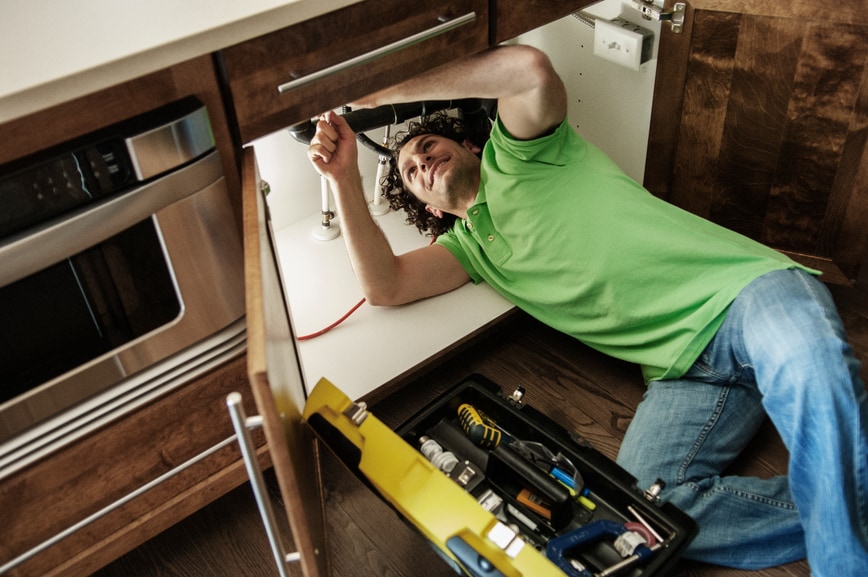Tax Tips for Handymen and Odd Jobs
If you work as a handyman or do odd jobs around town for money, you are operating a business in the eyes of the IRS. Since you own your own business, you're likely a self-employed sole proprietor. This means you'll have lots of potential tax deductions to investigate.
The One Big Beautiful Bill that passed includes permanently extending tax cuts from the Tax Cuts and Jobs Act, including increasing the cap on the amount of state and local or sales tax and property tax (SALT) that you can deduct, makes cuts to energy credits passed under the Inflation Reduction Act, makes changes to taxes on tips and overtime for certain workers, reforms Medicaid, increases the Debt ceiling, and reforms Pell Grants and student loans. Updates to this article are in process. Check our One Big Beautiful Bill article for more information.

Key Takeaways
- When filing taxes as a self-employed handyman, use Form 1040 and Schedule C to report income and calculate net income after taking all appropriate business deductions.
- Allowable business deductions include vehicle expenses, equipment, furniture and supplies, advertising costs, home office expenses, telephone and internet expenses, and training costs.
- Self-employment tax is currently set at 15.3% and includes amounts to fund Social Security and Medicare.
- File quarterly estimated tax payments during the year based on the schedule set by the IRS.
Reporting Business Income
When you work for yourself, you file the regular Form 1040 as a self-employed person. However, instead having your income reported to you on a Form W-2 as wages, salary or tips, you report it yourself as business income using Schedule C.
But you don't necessarily report the total sum of all income you receive from your handyman business. First use Schedule C to calculate your net income after taking all appropriate business deductions.
TurboTax Tip:
To track your business expenses, consider maintaining a separate bank account for your business, storing all receipts and invoices in organized files, and keeping precise mileage logs reflecting odometer readings by job name.
Handyman Business Deductions on Schedule C
If you pay for something that helps you earn income from your handyman business or odd-job work, you may be able to deduct it as a business expense. Examples of allowable business deductions include:
- business use of your car — either actual expenses or the standard mileage rate deduction. For 2024 the rate is 67 cents per mile, up from 65.5 cent per mile for 2023
- equipment, furniture and supplies you use in your business
- advertising expenses
- home office expenses if you use part of your house exclusively for your business
- telephone and Internet — 100% if you use these services only for business, otherwise a proportionated amount
- training costs related to being a handyman
Careful Record-Keeping Is Essential
Do yourself a favor and keep careful records of handyman income and expenses from the beginning. This makes preparing your tax returns easier and smoother. Even if you don't work full time at odd jobs, you can make record keeping easier by:
- maintaining separate bank accounts for your handyman business
- applying for new credit cards used only for your business
- storing all receipts and invoices in organized files
- keeping precise mileage logs reflecting odometer readings by job name
Self-Employment Taxes and Estimated Payments for Handyman and Odd-Job Income
As a self-employed handyman, you have to pay self-employment tax on your net profit. This tax — currently set at 15.3% — includes amounts to fund Social Security and Medicare. Complete and attach Schedule SE, Self-Employment Tax to your Form 1040 to calculate the amount of self-employment tax you owe.
You'll also might need to file quarterly estimated tax payments during the year. Pay these based on the schedule set by the IRS.
With TurboTax Live Full Service, a local expert matched to your unique situation will do your taxes for you start to finish. Or get unlimited help and advice from tax experts while you do your taxes with TurboTax Live Assisted.
And if you want to file your own taxes, TurboTax will guide you step by step so you can feel confident they'll be done right. No matter which way you file, we guarantee 100% accuracy and your maximum refund.
Get started now by logging into TurboTax and file with confidence.














